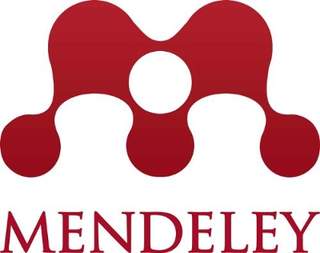THE USE OF OSTROM’S CONCEPT ON RULES-IN-USE IN THE ANALYSIS OF REGULATION OF FOREST MANAGEMENT UNIT FORMATION
Abstract
Following the establishment of Forest Management Units (KPHL/KPHP) by the Indonesian Ministry of Forestry, the next step that has to be done is the formation and operationalization of KPHL/KPHP organization by local governments. In reality, implementation of the respective obligation is stagnated due to a number of obstacles such as the regulatory aspects that haveless trust and difficult to be implemented by local governments. In the Institutional Analysis and Development (IAD Framework) from Elinor Ostrom, there is onecomponent, i.e. the rules-in-use concept that is possible to be applied as a tool to analyze the relationship between the content of a certain regulation and the structure of action-situation formed due to implementationof regulation.This study aimsto test effectiveness of the use of the concept of rules-in-use to find substantial shortcomings of the regulation on KPHL/KPHP formation at provincial level,as a basisforimprovement. Accordingly, analysis was performed on PP No.6/2007 jo. PPNo.3/2008, Permendagri No.61/2010 and PP No.41/2007by making analysis of regulation contents and feedback from the implementation process. Based on the results of this study, it can be concluded that the use of Ostrom's rules-in-use concept is adequately effective to find the shortcomings of KPHL/KPHP regulation content.
Keywords
Full Text:
PDFReferences
Birkland, T.A. (2001). An introduction to the policy process: theories, concepts, and models of public policy making. New York: M.E. Sharpe.
Blomquist, W. (2006). The policy process and large-comparative studies. In Sabatier, P.A. (Ed.), Theories of the policy process. Boulder, CO: Westview Press.
Cubbage, F., Harou, P., & Sills. R. (2007). Policy instruments to enhance multi-functional forest management. Forest Policy and Economics, 9, 833-851.
Direktorat Jenderal Planologi Kehutanan. (2013). Perkembangan wilayah KPHP dan KPHL model. Diakses dari http: //www.kph.dephut.go.id / index.php?option=com_content&view =category&layout=blog&id=73 &Itemid =222.(8 Pebruari 2014).
Dunn, W.N. (2000). Pengantar analisis kebijakan. (S. Wiwaha, Trans.). Yogyakarta: Gadjah Mada University Press.
Gregersen, H. M., Hermosilla, A. C., White, A., & Philips, L. (2006). Tata kelola hutan dalam sistem federal: Sebuah tinjauan atas pengalaman dan implikasinya terhadap desentralisasi. In
Colfer, C.J.P., & Capistrano, D. (Eds.), Politik desentralisasi: hutan, kekuasaan dan rakyat, pengalaman di berbagai negara. Bogor: Center for International Forestry Research (CIFOR).
Hill, M. & Hupe, P. (2002). Implementing public policy. London: Thousand Oaks, New Delhi: Sage Publication.
Kartodihardjo, H. (2008). Kerangka hubungan kerja antar lembaga sebelum dan setelah adanya KPH. (Laporan proyek GTZ). Strengthening the Management Capacities in the Ministry of Forestry (SMCF).
Kartodihardjo, H., Nugroho, B., & Putro, H.P. (2011). Pembangunan kesatuan pengelolaan hutan (KPH): konsep, peraturan perundangan dan implementasi. Jakarta: Direktorat Jenderal Planologi Kehutanan.
Meinzen-Dick, R., & Knox, A. (2001). Collective action, property rights and devolution of natural resource management: A conceptual framework. In Meinzen-Dick, R., Knox, A., & Gregorio, M.D. (Eds), Collective action, property rights and devolution of natural resource management: exchange of knowledge and implications for policy. Feldafing, Germany: DSE/ZEL.
Nurrochmat, D.R. & Hasan, M.F. (Eds.). Ekonomi politik kehutanan: Mengurai mitos dan fakta pengelolaan hutan. (Cetakan kedua, revisi). Jakarta: INDEF.
Nurrochmat, D.R. (2011). Review infrastructure framework and mechanism related to SFM as important option in reducing emission from deforestation and forest degradation. (MoFor-ITTO project report). Jakarta: MoFor-ITTO.
Ostrom, E. (1999). Governing the commons: The evolution of institutions for collective action. Cambridge: Cambridge University Press.
Ostrom, E. (2005). Understanding institutional diversity. Princenton, New Jersey: Princenton University Press.
Ostrom, E. (2008). Institutions and the environment. Economic Affairs, 28(3), 24-31. Ostrom, E. & Crawford, S. (2005). A grammar of institutions. In Ostrom, E. (Ed.), Understanding institutional diversity. Princeton: Princeton University Press.
Ostrom, E., Gardner, G., & Walker, J. (2006). Rule, games & common-pool resources. Michigan: University of Michigan Press.
Sabatier, P.A., Leach, W., Lubell, M., & Pelkey, N. (2005). Theoretical frameworks explaining partnership success. In Sabatier, P. A., Lubell, M., & Focht, W. (Eds.), Swimming upstream: Collaborative approaches to watershed management. Cambridge, MA: MIT Press.
Schlager, E., & Blomquist, W. (1996). A comparison of three emerging theories of the policy process. Political Research Quarterly, 49(3), 3150.
Schweik, C.M., & Kitsing, M. (2010). Applying Elinor Ostrom's rule classification framework to the analysis of open source software commons. Transnational Corporation Review, 2(1), 13-26.
DOI: https://doi.org/10.20886/jakk.2015.12.1.13-26
Copyright (c) 2015 Jurnal Analisis Kebijakan Kehutanan



